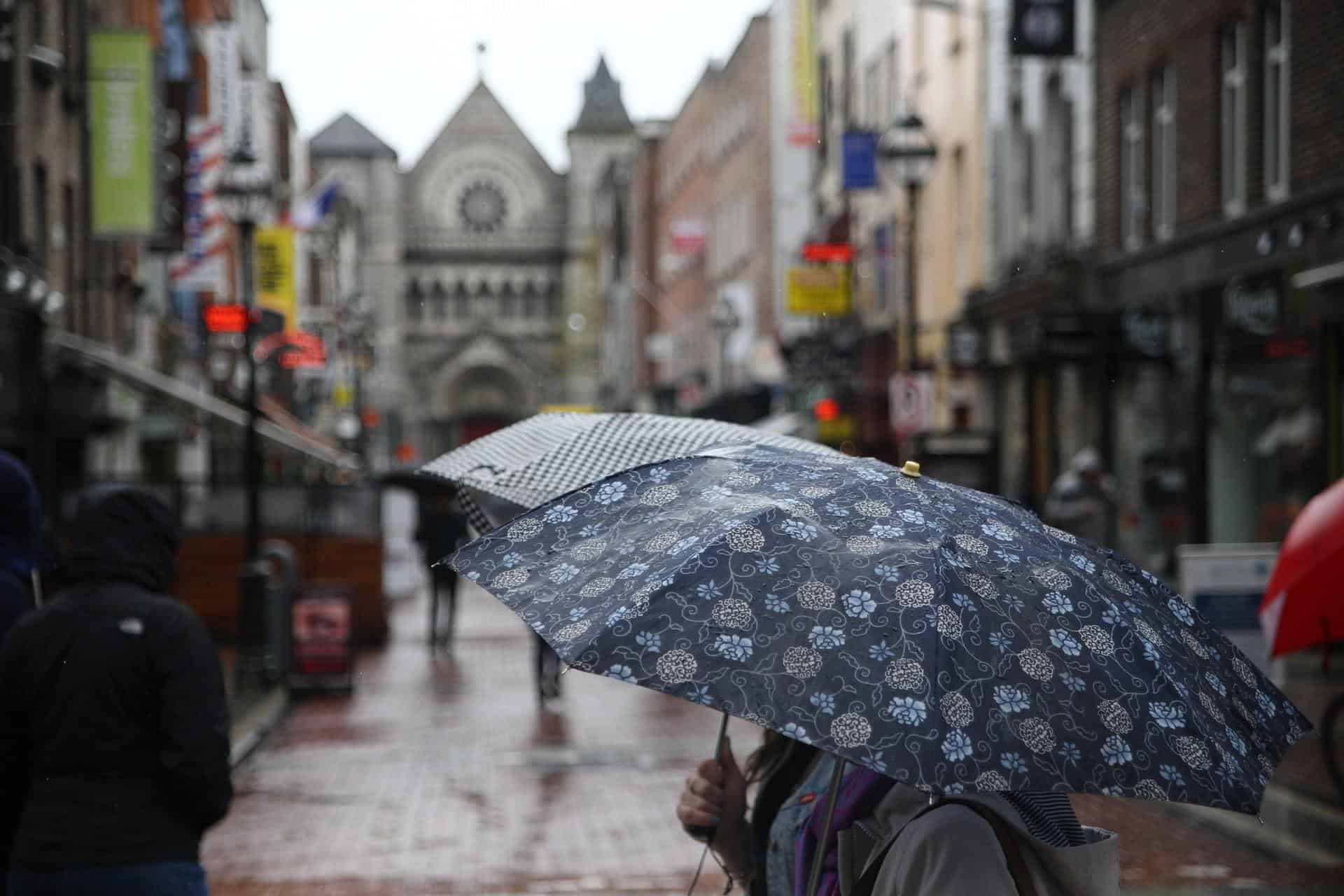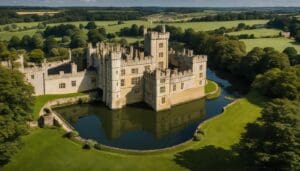Exploring The Little Museum of Dublin

Updated On: April 22, 2024 by Ahmed Samir
Dublin, Ireland’s vibrant and historic capital, is renowned for its rich cultural heritage, literary giants, and centuries of captivating history. In the heart of this bustling city, nestled amidst the charming Georgian architecture of St. Stephen’s Green, lies a modest yet extraordinary institution known as The Little Museum of Dublin. This unassuming gem offers visitors a unique and immersive experience, unlocking the untold stories and hidden treasures that have shaped Dublin’s identity over the centuries. In this comprehensive exploration, we will journey through the annals of time, unearthing the secrets and significance of The Little Museum of Dublin. In this place, history comes to life in vivid and unexpected ways.
The Origins of The Little Museum of Dublin
The Little Museum of Dublin first opened its doors in 2011. Founded by Trevor White and Simon O’Connor, this museum was a labour of love born out of their passion for collecting and preserving the stories of Dublin’s past. It began as a small, privately funded venture, but it quickly captured the imagination of the public and the support of Dubliners who wanted to share their city’s history.
The museum found its home in a beautiful Georgian townhouse on St. Stephen’s Green, one of Dublin’s most iconic locations. This setting provides a charming backdrop for the exhibition of Dublin’s history, allowing visitors to step back in time and explore the city’s rich heritage. The choice of location itself is a nod to the past, as the townhouse reflects the architectural style of the 18th century, a period of great significance in Dublin’s history.
A Unique Approach to Museum Storytelling
What sets The Little Museum of Dublin apart from other museums is its intimate and personal approach to storytelling. Instead of presenting a traditional, linear narrative of Dublin’s history, the museum focuses on individual stories and unique artefacts donated by Dubliners. These items, ranging from photographs and letters to clothing and souvenirs, offer a glimpse into the lives and experiences of the people who have called Dublin home over the years.
The museum’s collection is ever-evolving as it continues to accept donations from the public. This dynamic approach allows the museum to stay relevant and capture the evolving history of Dublin. Visitors can expect to see diverse exhibits, from the iconic to the everyday, all of which contribute to a mosaic of Dublin’s past.
Notable Exhibits
The Little Museum of Dublin boasts many exhibits covering various aspects of the city’s history. Some of the most notable include:
- The Dubliners’ Gallery: This exhibit showcases portraits of famous Dubliners who have significantly contributed to the city and the world. Visitors can learn about renowned literary figures like James Joyce and W.B. Yeats and influential musicians, politicians, and activists.
- U2: Made in Dublin: As one of the world’s most famous rock bands, U2’s roots in Dublin are celebrated in this exhibit. It features memorabilia from the band’s early days, including instruments, original lyric sheets, and photographs.
- Dublin in the Rare Oul’ Times: This exhibit paints a vivid picture of Dublin in the 20th century, chronicling the city’s transformation through photographs, letters, and personal artefacts. It offers a glimpse into the lives of ordinary Dubliners during this period of change.
- The Lockout: Dublin 1913: This exhibit explores a significant chapter in Dublin’s history, the 1913 Dublin Lockout, a major labour dispute that profoundly impacted the city’s working class. Visitors can delve into the stories of those involved and gain insight into the social and political struggles of the time.
- A Nation Once Again: This exhibit delves into the complex history of Irish nationalism and the fight for independence. It showcases artefacts from the Irish Civil War, the struggle for sovereignty, and the signing of the Anglo-Irish Treaty in 1921.
- The Women’s Suffrage Movement: Highlighting women’s important role in shaping Dublin’s history, this exhibit pays tribute to the suffragettes who fought for women’s right to vote in Ireland. Personal stories, photographs, and suffrage banners are on display.
The Little Museum of Dublin’s commitment to preserving these big and small stories creates a deeply immersive experience for visitors. It allows them to personally connect with the city’s past, fostering a sense of empathy and understanding beyond the typical museum experience.
Community Involvement and Education
The Little Museum of Dublin strongly emphasises community involvement and education. It hosts various events, lectures, and workshops that engage visitors of all ages in Dublin’s history. These educational programs aim to deepen people’s understanding of the city’s past and its impact on the present.
Additionally, the museum has a robust outreach program that collaborates with local schools and community organisations. This initiative brings history to life for students and encourages them to appreciate the rich tapestry of Dublin’s past. The Little Museum of Dublin plays a vital role in preserving and sharing the city’s heritage by involving the community in the museum’s activities.
Supporting Dublin’s Cultural Renaissance
Dublin recently underwent a cultural renaissance, with a thriving arts scene, a growing tech industry, and a renewed sense of vitality. The Little Museum of Dublin plays a significant part in this renaissance by celebrating the city’s heritage and connecting it to the present and future.
The museum’s presence also serves as a reminder of the importance of preserving Dublin’s architectural and cultural heritage. Its location in a beautifully preserved Georgian townhouse highlights the need to protect Dublin’s historic buildings and maintain a sense of continuity with the past.
Attractions Near The Little Museum of Dublin
While The Little Museum of Dublin is a captivating destination in its own right, its prime location in the heart of the city ensures that visitors are within easy reach of numerous other cultural, historical, and recreational attractions. Here are some notable places to explore near the museum:
- St. Stephen’s Green: Right across the street from The Little Museum of Dublin is St. Stephen’s Green, one of the city’s most beautiful and serene parks. This tranquil oasis offers lush greenery, picturesque walking paths, and a peaceful lake. It’s an ideal spot for a stroll or a relaxing picnic amidst the hustle and bustle of the city.
- Grafton Street: A stone’s throw away from the museum, Grafton Street is Dublin’s premier shopping and entertainment district. It’s a pedestrian-only thoroughfare with many shops, boutiques, cafes, and street performers. A stroll down Grafton Street is a quintessential Dublin experience.
- Dublin Castle: Just a short walk from The Little Museum of Dublin, Dublin Castle is a historic symbol of Ireland’s enduring heritage. Visitors can explore the medieval castle’s interior, including the State Apartments, the Chapel Royal, and the beautiful gardens. The castle often hosts cultural events and exhibitions.
- Trinity College Dublin: Home to the world-famous Book of Kells, Trinity College is one of Ireland’s oldest and most prestigious universities. The library at Trinity College houses this priceless illuminated manuscript, and the stunning Long Room is a bibliophile’s dream.
- National Museum of Ireland – Archaeology: A brief stroll from the museum, this institution offers a deep dive into Ireland’s archaeological heritage. Exhibits include ancient artefacts, prehistoric treasures, and the renowned Ardagh Chalice.
- Merrion Square: Located nearby, Merrion Square is a historical Georgian square that features beautifully preserved townhouses, a statue of Oscar Wilde, and the childhood home of W.B. Yeats. The park at its centre is a delightful place to relax.
- National Gallery of Ireland: Art enthusiasts will appreciate the proximity of the National Gallery, which houses a vast collection of European and Irish artworks, including pieces by Caravaggio, Vermeer, and Jack B. Yeats.
- Dublin’s Creative Quarter: Located in the vicinity, the Creative Quarter is a hub for fashion, design, and creativity. It’s a great place to explore boutique shops, art galleries, and trendy cafes.
- Dublin’s Literary Trail: Dublin is renowned for its literary history, and many landmarks associated with famous writers are within walking distance of The Little Museum of Dublin. You can visit the James Joyce Centre, the Samuel Beckett Bridge, and the Dublin Writers Museum.
- Temple Bar: Dublin’s cultural quarter, Temple Bar, is known for its vibrant arts scene, live music venues, and eclectic atmosphere. It’s an excellent place to soak in the city’s contemporary culture and nightlife.
- Dublin Bikes: For a convenient and eco-friendly way to explore the city, consider renting a bike from one of the Dublin Bikes stations scattered throughout the area. Cycling allows you to cover more ground and discover even more hidden gems.
Conclusion
The Little Museum of Dublin is much more than just a museum; it is a living testament to the spirit of Dublin and its people. Its unique approach to storytelling, emphasis on community involvement, and dedication to preserving the city’s history make it a cultural treasure that enriches the lives of Dubliners and visitors.
In a world that often rushes past the past, The Little Museum of Dublin offers a serene haven where time seems to stand still. It invites us to reflect on the stories that have shaped Dublin and to appreciate the beauty of the city’s history. As a small museum with a big heart, it reminds us that history is not just about the past; it is a part of who we are and has the power to inspire and connect us across generations. So, if you find yourself in Dublin, take advantage of the opportunity to step into this little treasure trove of history and experience the magic of The Little Museum of Dublin.






